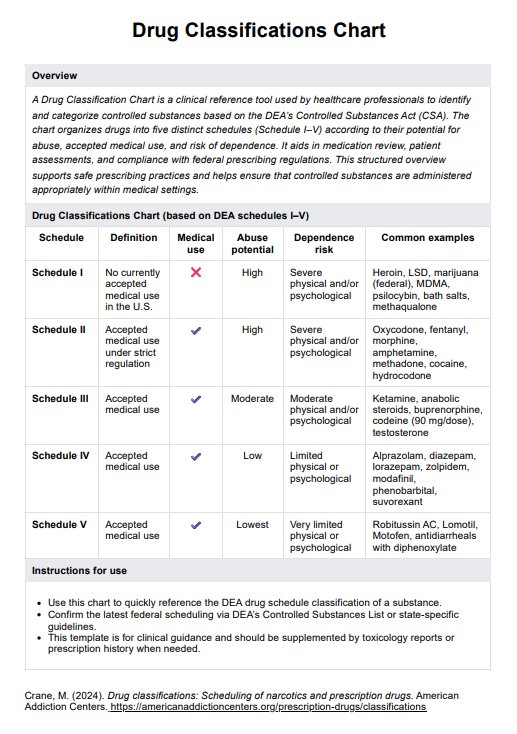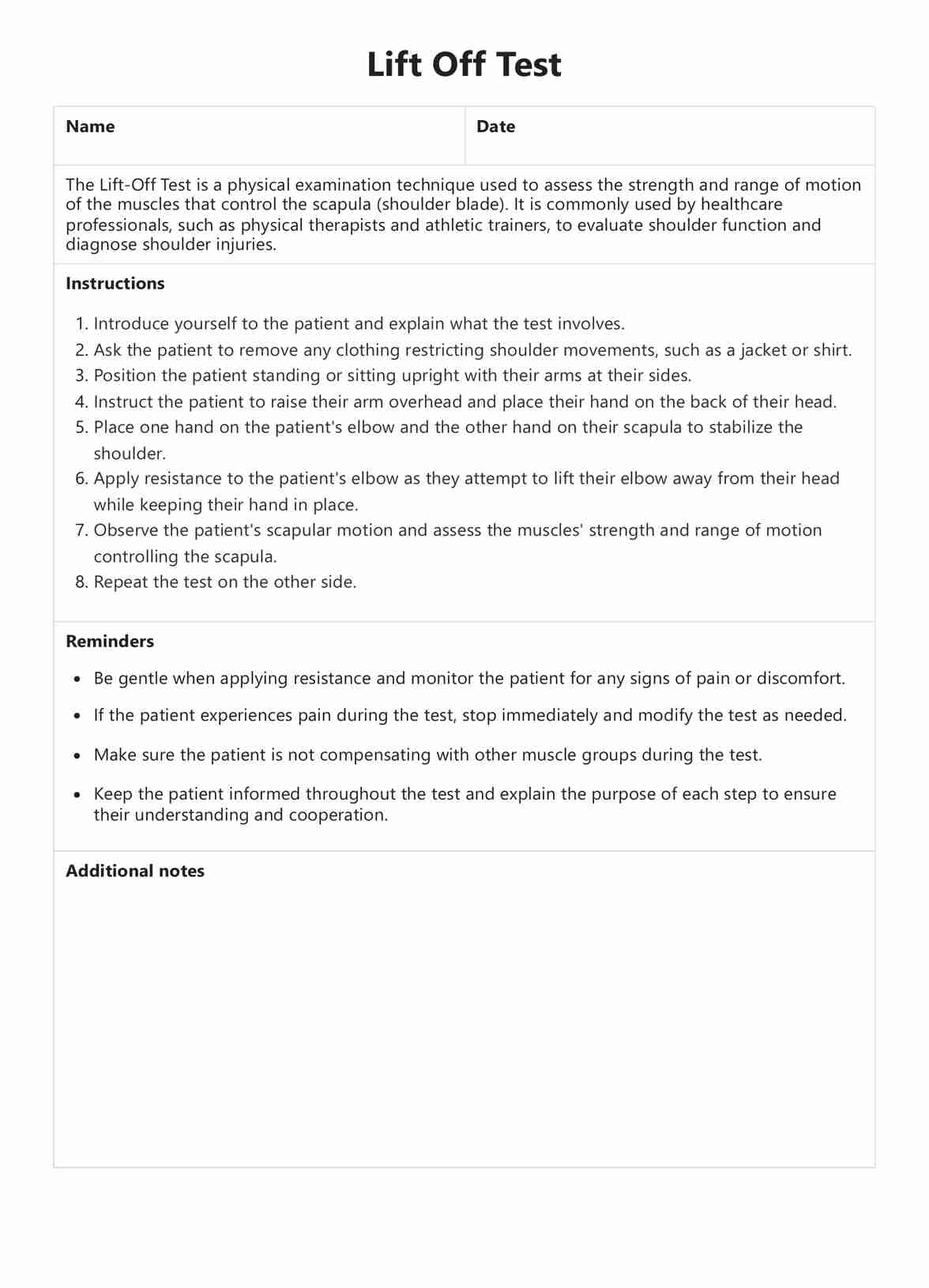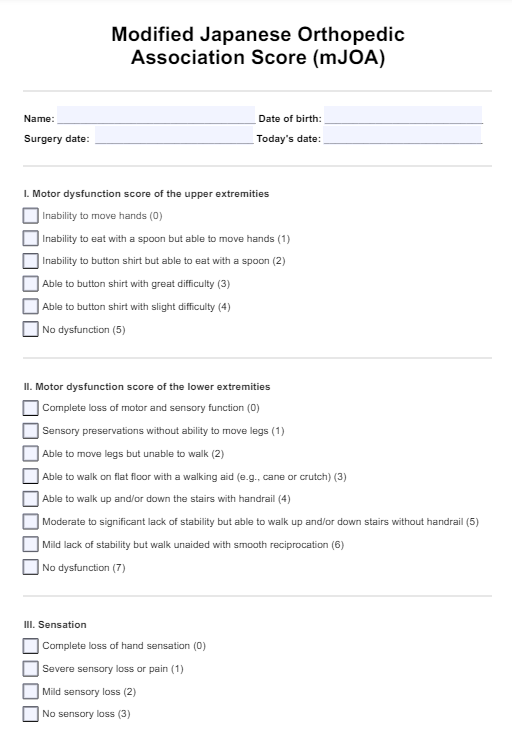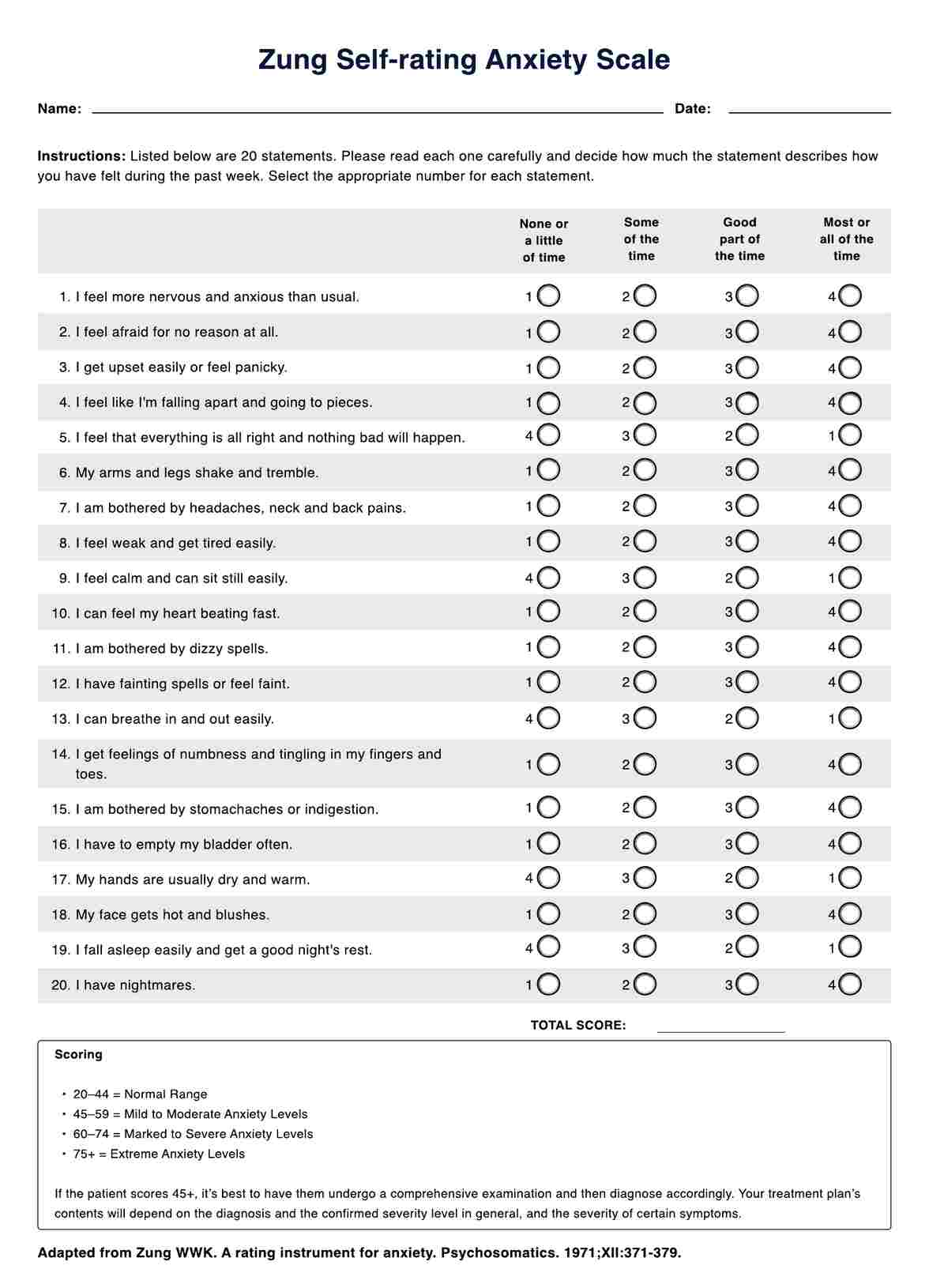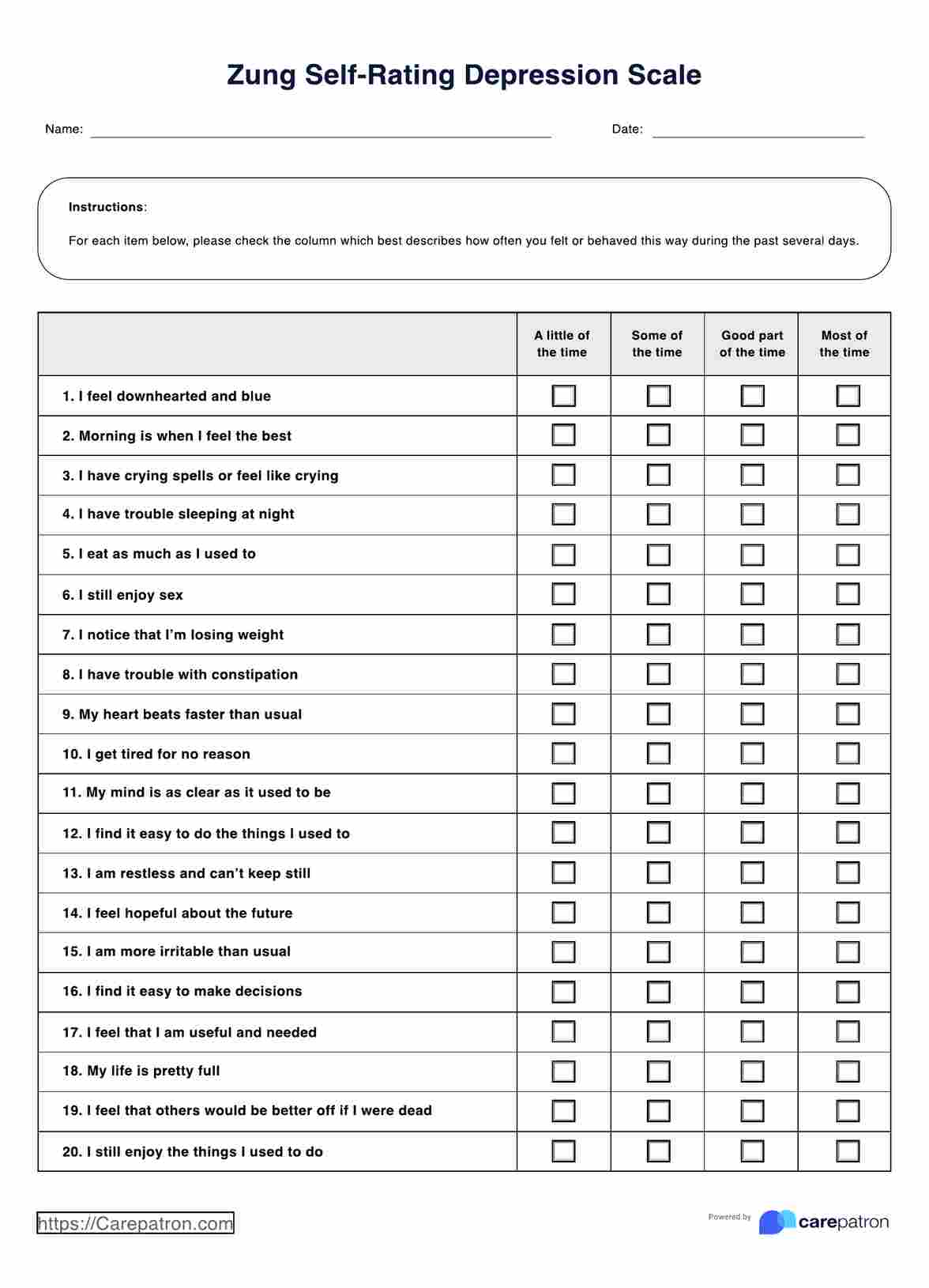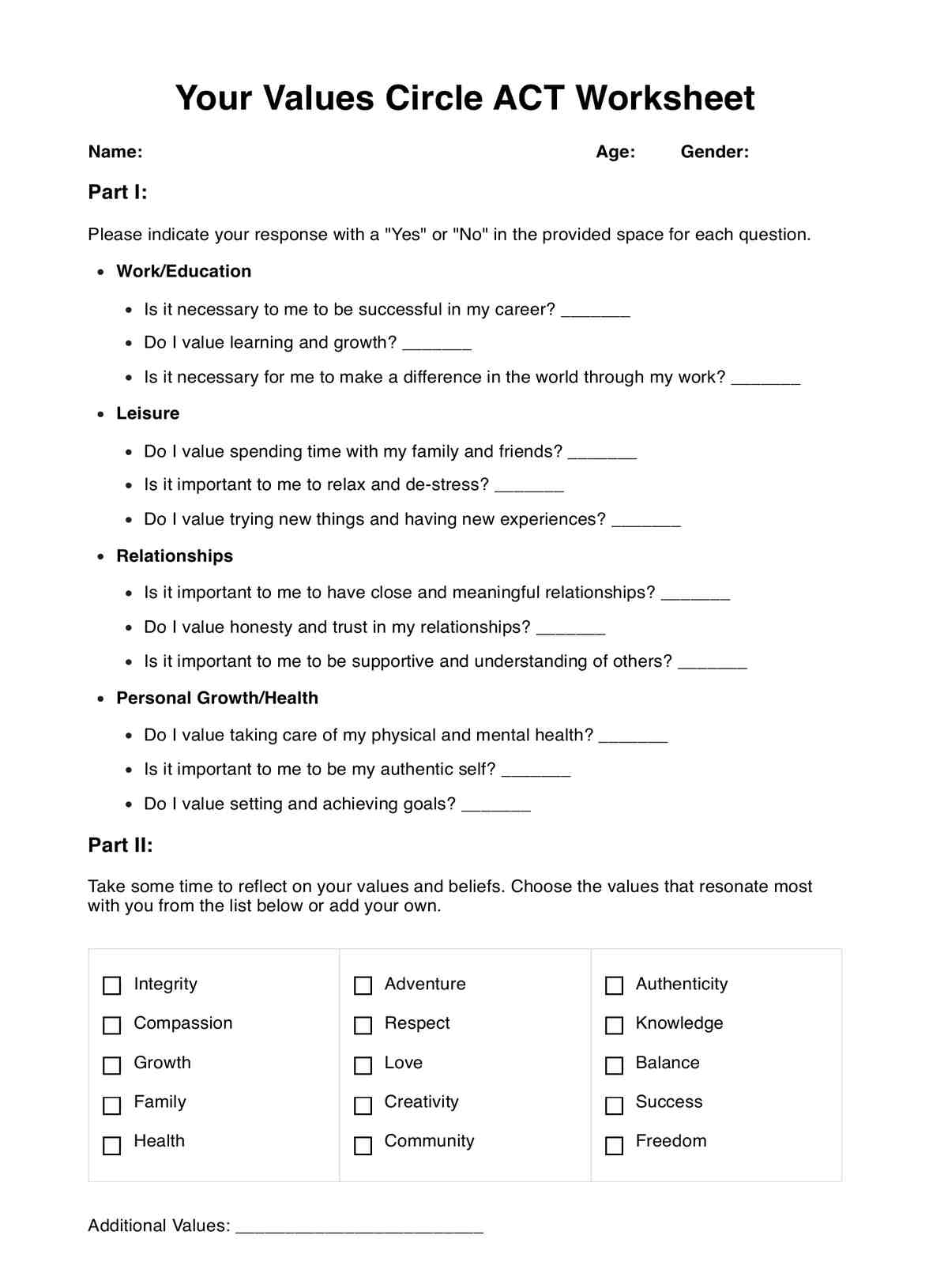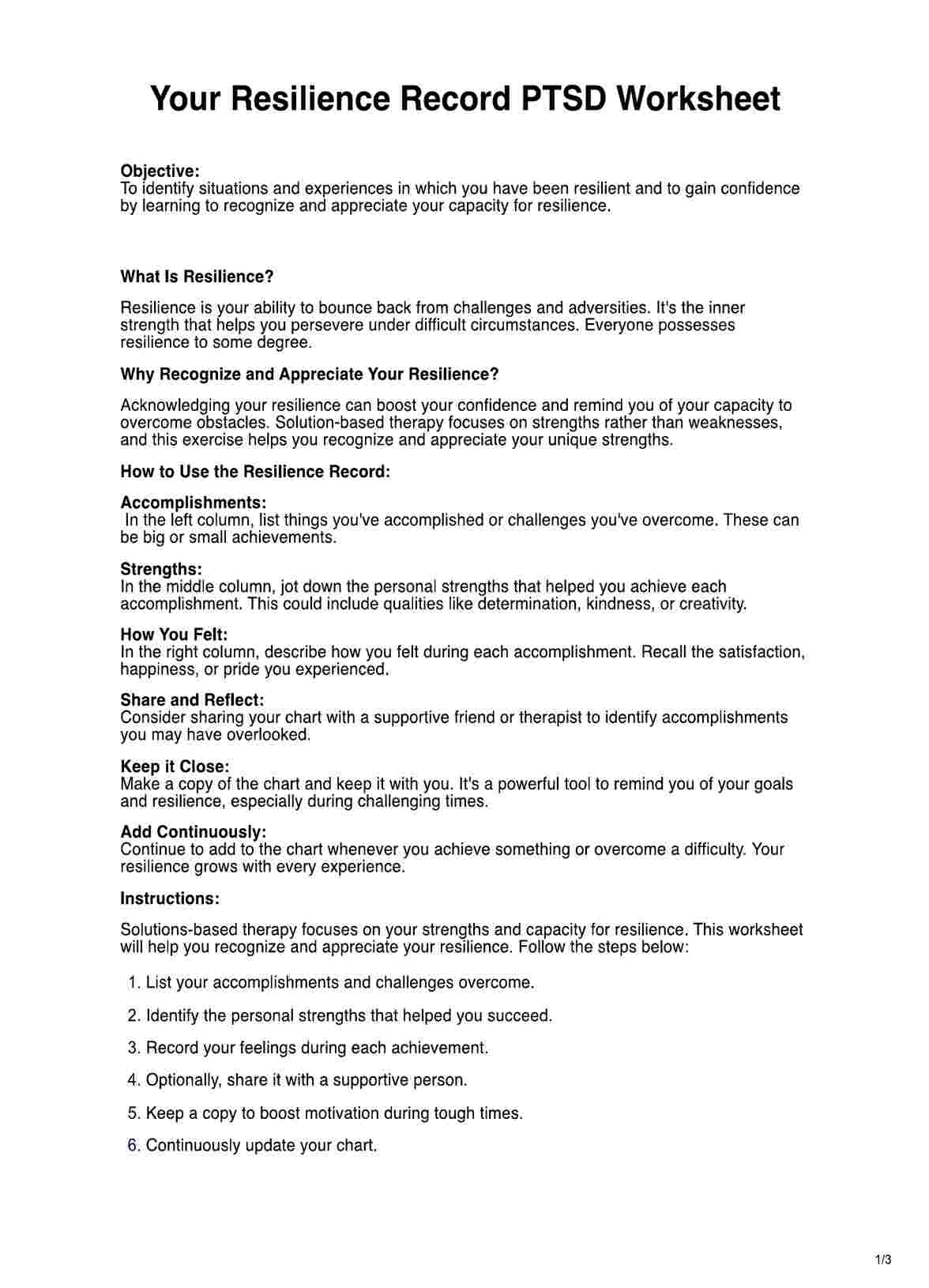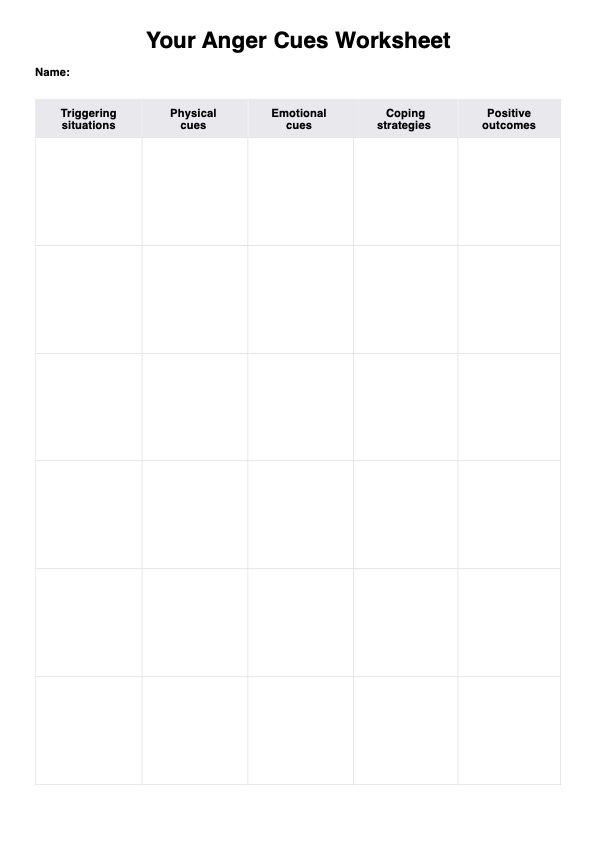Yes, the checklist is adaptable for patients receiving hospice care at home. It includes steps for coordinating home visits, managing medications, and involving the family in care planning. This ensures patients receive the same comprehensive care at home as they would in a facility.
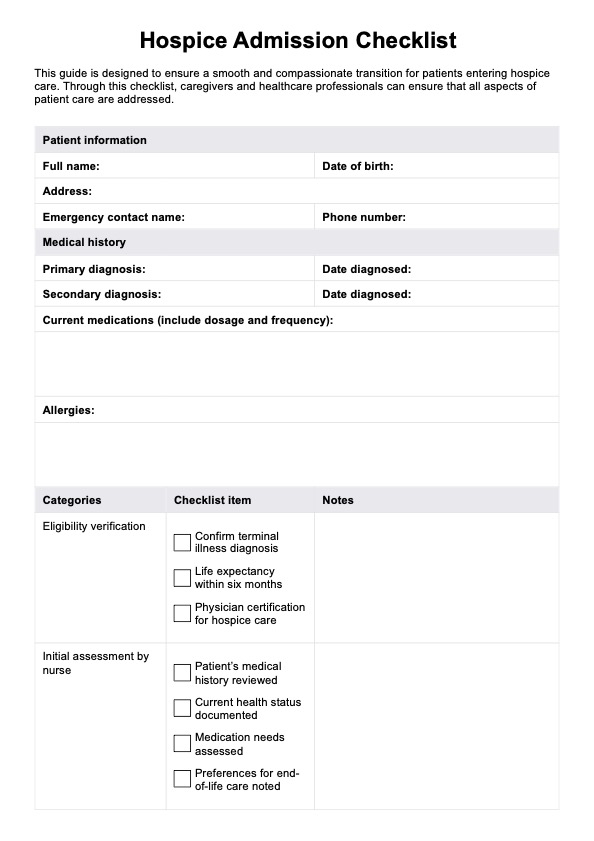
Hospice Admission Checklist
Streamline hospice admissions with Carepatron's comprehensive checklist app. Enhance patient care with our free PDF guide and expert tips.
Hospice Admission Checklist Template
Commonly asked questions
Yes, the checklist is an excellent tool for palliative care planning. It provides a structured approach to addressing patients' physical, emotional, and spiritual needs during this stage of life, ensuring a holistic and compassionate care experience.
Yes, the checklist adheres to established clinical guidelines for hospice care. It ensures compliance with professional standards while offering an example of a patient-centered approach that prioritizes quality and compassion.
EHR and practice management software
Get started for free
*No credit card required
Free
$0/usd
Unlimited clients
Telehealth
1GB of storage
Client portal text
Automated billing and online payments


